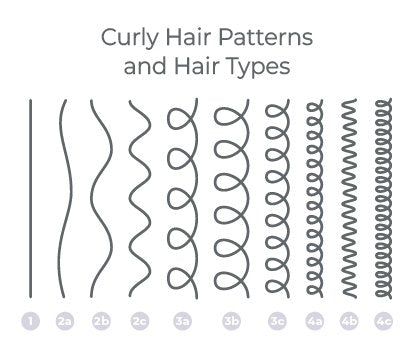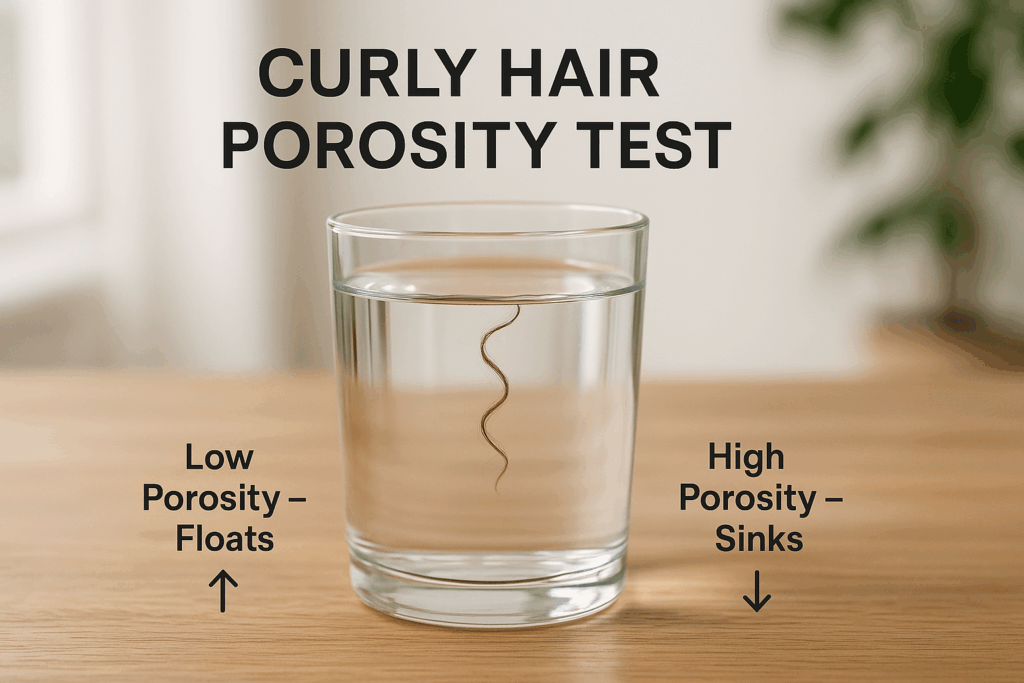Welcome to Curly Hair 101 your beginner’s guide to understanding the science and beauty behind your curls. Whether you’re just starting your curly-hair journey or looking to refine your routine, knowing your curl type, hair porosity, and texture is key. Once you understand these three elements, you can choose products and techniques that truly work for your hair, not against it.
What’s Your Curl Type?

The first step in Curly Hair 101 is discovering your curl pattern. Most curl experts use the Type 2–4 system to describe different curl shapes:
- Type 2 (Wavy): Hair forms a gentle “S” shape, from loose (2A) to defined (2C). It’s often fine and can lose shape easily.
- Type 3 (Curly): Hair forms spirals ranging from soft (3A) to tight ringlets (3C). It’s full of bounce but prone to frizz.
- Type 4 (Coily/Kinky): Hair forms very tight “Z” patterns (4A to 4C). It’s incredibly versatile and beautiful but needs extra moisture.
💡 Pro Tip: You might have more than one curl type on your head and that’s completely normal!
For a visual guide, check out Naturally Curly’s Curl Type Chart a great resource to see where you fit.
Understanding Hair Porosity
Porosity determines how well your hair absorbs and retains moisture an essential part of Curly Hair 101.
How to test porosity:
Place a clean strand of hair in a glass of water.
- If it floats, you have low porosity.
- If it sinks slowly, you have normal porosity.
- If it sinks quickly, you have high porosity.

Low Porosity
Tight cuticles make it hard for moisture to enter but easy to retain. Use lightweight, water-based products and add heat (like a warm towel) during deep conditioning.
Normal Porosity
Balanced cuticles absorb and retain moisture well. Most products work easily on this hair type.
High Porosity
Open cuticles absorb moisture fast but lose it quickly too. Use heavier creams and sealants (like oils or butters) to lock in hydration. Avoid harsh heat or chemical treatments.
👉 Recommended read: Healthline – What Is Hair Porosity?
Identifying Your Hair Texture & Density

Texture refers to how thick or fine each strand of hair is.
- Fine: Soft, delicate, easily weighed down by heavy products.
- Medium: The most common; holds styles well.
- Coarse: Strong and resistant but can feel dry.
Density refers to how much hair you have on your head the number of strands per inch.
- Low Density: Scalp easily visible; use lightweight stylers.
- Medium: Full, balanced appearance.
- High Density: Thick and voluminous; best managed in sections.
How to Use This Information
Now that you know your Curly Hair 101 profile, you can tailor your hair routine:
| Hair Type | Porosity | Product Tips |
|---|---|---|
| Type 2 + Low Porosity | Lightweight leave-ins, mousses, avoid heavy oils | |
| Type 3 + Normal Porosity | Balanced moisture + light-hold gels | |
| Type 4 + High Porosity | Rich butters, creams, and sealing oils |
Internal links:
Perfect Wash Day Routine for Curly Hair
Curly Hair Routine for Beginners
Common Curly Hair Myths — Debunked!
- “My curls don’t grow.”
They do! Curly hair just shrinks, making growth harder to see. - “I can use any shampoo.”
Harsh sulfates strip natural oils — always go for sulfate-free cleansers. - “More product = better curls.”
Nope! Too much can weigh your curls down. Start light and layer gradually.
Conclusion
Curly Hair 101 is about learning your hair’s language. Once you understand your curl type, porosity, and texture, caring for your hair becomes intuitive. Experiment, observe, and don’t stress perfection your curls are unique and beautiful just as they are.
Ready to take the next step?
✨ Try our Curly Hair Routine for Beginners and start building your personalized curl care plan today.
Frequently Asked Questions (FAQ)
Q1: Can my porosity change over time?
A: Yes, chemical processing, heat damage, and age can alter your hair’s porosity, typically making it higher.
Q2: What if I have multiple curl patterns?
A: This is very common! Focus on techniques and products that enhance your loosest and tightest curls. Styling with your hands can help clump similar curls together.
Q3: Is the curl type system necessary?
A: It’s a helpful starting point for communication and finding inspiration, but it’s not a strict rulebook. Focus more on porosity and density for your daily routine.
Q4: How often should I reassess my curl type and porosity?
A: It’s a good idea to check your porosity every 6-12 months or after any major chemical treatment, as it can change. Your curl type is generally more constant.


Leave a Reply